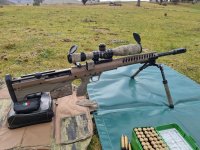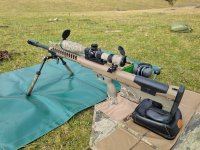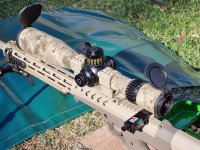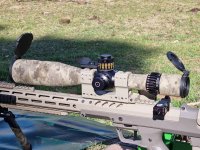I had a delay because my house got flooded.I’m waiting for @koshkin and @Covertnoob5 to weigh in too.
Wtf doods I’m sick of this crap lol where’s my free gdamn reviews???
Ok I’m hangry & joking.
Ahem.
In other words:
I too am awaiting for these fine gentleman, these stewards of glass, these sommeliers of Solms to opine upon this latest fine optomechanical light-gathering device.
As far as the 6-36x S&B goes, I am very impressed with the scope and it comfortably goes onto my list of recommendations.
It is unusually well optimized at all magnifications, easy to get behind, comes with good turrets and the reticles work for my purposes.
I would have preferred a version with Euro FOV, but the throttled FOV version has the same FOV as ZCO and 7-35x Tangent.
Where the new S&B fits in the hierarchy of fancy scopes is hard to tell for sure, but I would take it over the ZCO from what I have seen (I have not tested the 8-40x ZCO, but I am very familiar with the earlier models), but not by much. Between S&B and the new Tangent, it is a tough call. Tangent still has their weird turret magic and better micro contrast, but it is close. I think Tangent cuts through the mirage a little better and has a little more depth of field.
Looking at the price, S&B 6-36x56 has been siting around $3800 for a while now. Tangent is a lot more money. ZCO is more money than S&B as well.
If I were spending my own money and wanted an alpha scope, the new S&B would be very hard to overlook. If money does not matter, I think on balance Tangent is still the one to beat, but we are looking at incremental improvements for quite a bit more cash.
The best bang for the buck with alpha scopes is still the Razor Gen3, but the new S&B is extremely compelling at under $4k. I'll have more details on my website as I get beyond the hustle and bustle of SHOT show.
ILya






